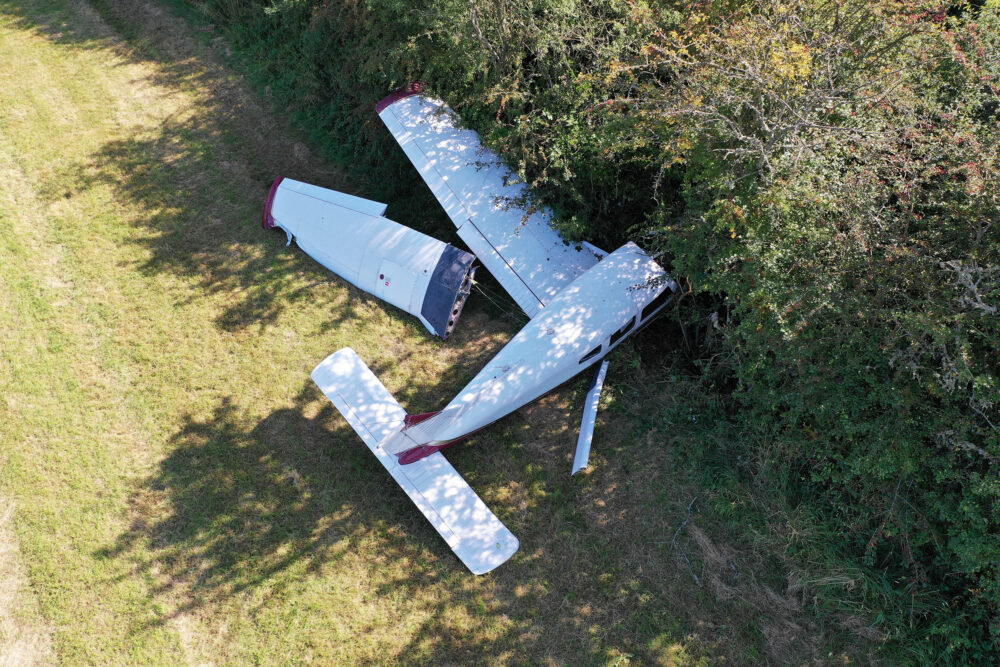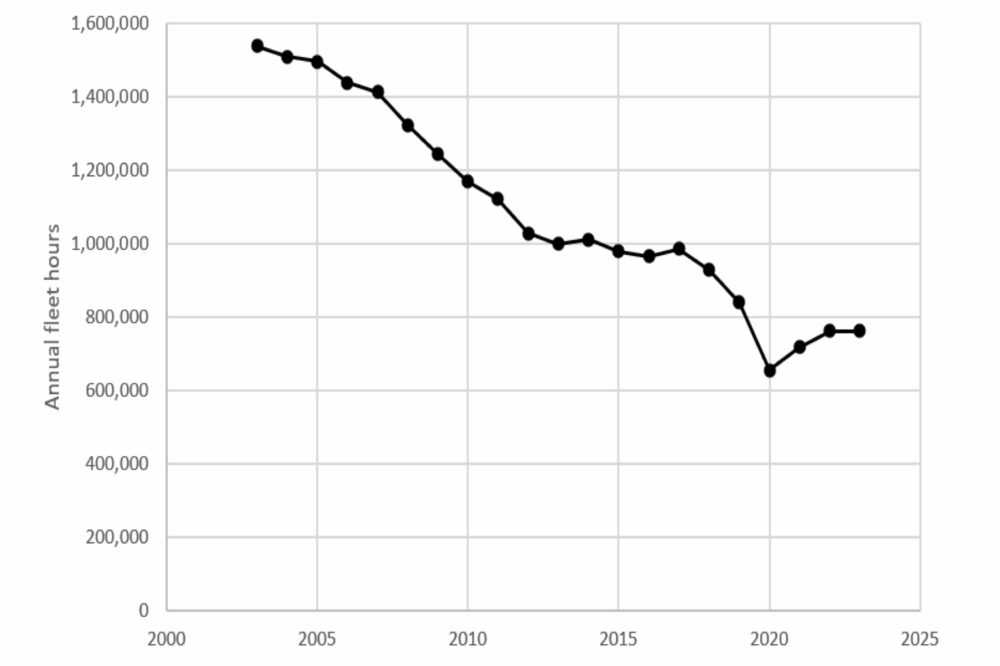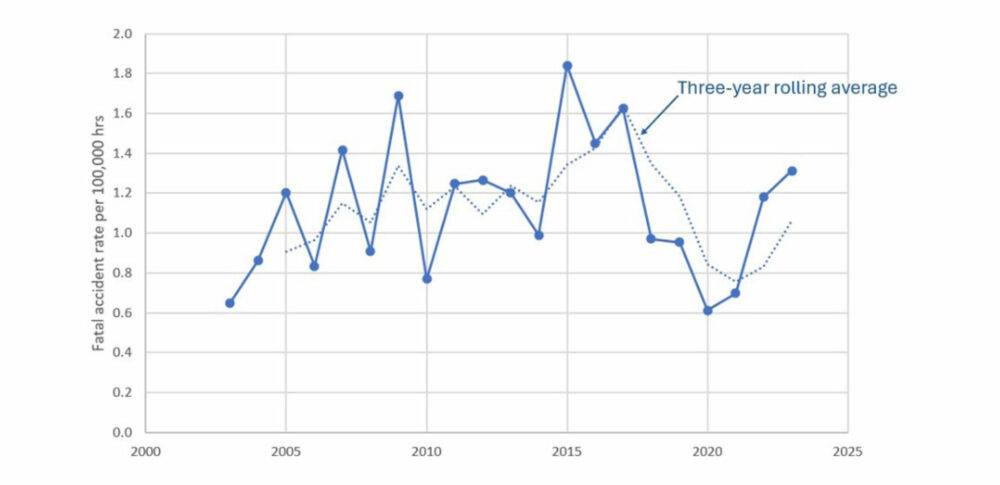… and Mid-Air Collisions (MACs) are a lot higher than in the US
3For the period 2003-2023, 39 collisions involving 78 aircraft occurred in the UK which equated to a collision rate of 0.341 per 100,000 hours flown. The US collision rate was 0.092 per 100,000 hours flown or approximately one quarter of the rate in the UK. The report laconically states: “Further study would be required to analyse the contributory factors to this large difference in MAC rates between the UK and the USA, and to also compare the MAC rates in other European countries.”
The introduction of FLARM in the UK glider fleet appears to have significantly reduced the number of collisions between gliders and the 2023 Melton Mowbray MAC event was the first glider-glider collision to have occurred for nine years. This would appear to reinforce the benefits of using a single type of collision avoidance system. It is not yet known whether the introduction of a variety of Electronic Conspicuity systems has helped to reduce the rate of collisions for powered aircraft.
Biggest safety issue continues to be Loss of Control in Flight
4A variety of statistics in the report highlight the fact that LOC-I continues to be the largest single cause of accidents and fatalities. The report rightly highlights that, “The key safety messages to avoid loss of control have been reinforced in revised promotional materials published by the Civil Aviation Authority”, but there appears to be no desire by the regulators to address the fundamental training issues underlying these statistics.
Perhaps now is the time to revisit the flight training syllabus to ensure this critical LOC-I arena receives the focus it deserves – and almost certainly to ensure that all Flying Instructors have received appropriate Upset Prevention and Recovery Training.
Improved co-operation between AAIB and CAA
5The CAA appears generally to be working well with the AAIB around GA issues, with decent coordination on safety issues, many of which stem from AAIB safety recommendations. The actions following the G-BXBU Cap 10 accident is a good example, with several partially adequate responses but good engagement to try to close the gaps.
The way forward?
6The number of fatal accidents involving GA aircraft has not reduced in proportion to the hours flown, and the fatal accident rate has increased above a long-term trend in the last five years. The mid-air collision rate in the UK is considerably higher, by a factor of four, than in the USA. The AAIB has stated that it plans to work with stakeholders to identify underlying factors for both the GA fatal accident rate and the MAC rate, to support further safety promotion on these topics.
Perhaps the question ‘is this enough?’ should be asked, especially when LOC-I stubbornly continues to be the largest single safety issue and yet no changes to GA pilot training are even being considered.









